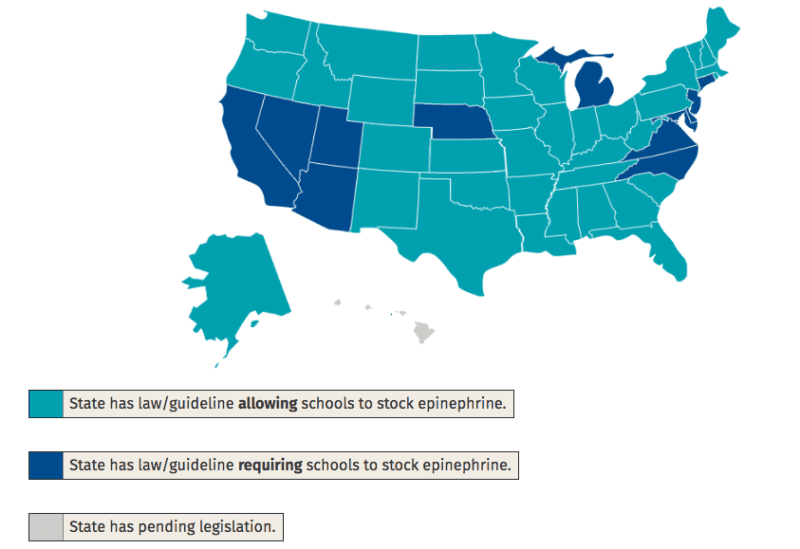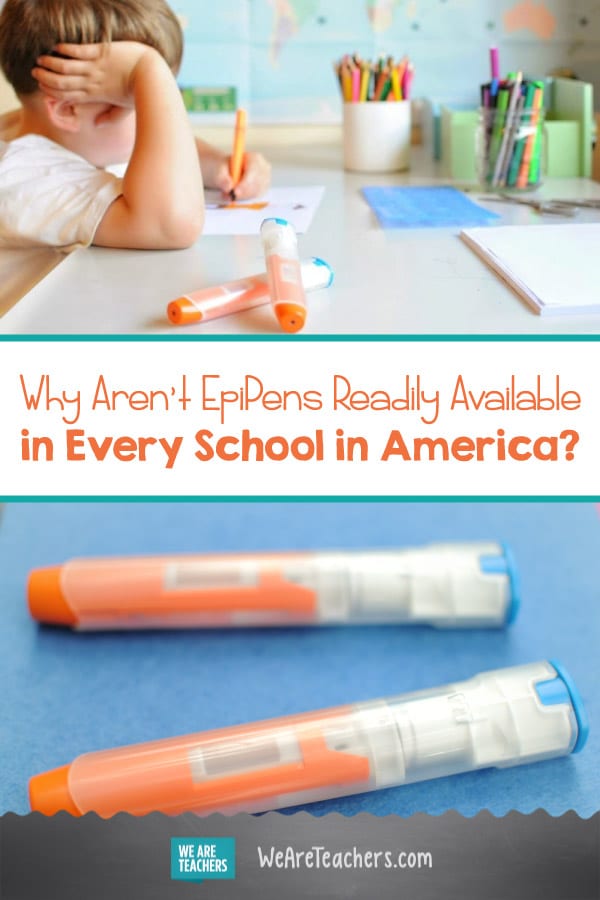The University of Maryland is making headlines for adding EpiPens to all campus cafeterias. This is great news—there are countless examples of how an EpiPen truly saved someone experiencing anaphylaxis. But why aren’t these life-saving devices a requirement for every school in the country?
Wait a minute. They aren’t? No. They aren’t.
Why the School Access to Emergency Epinephrine Act doesn’t hold up.
In 2013 President Obama signed the School Access to Emergency Epinephrine Act, bringing an epinephrine-stocking law into effect for most schools in the United States. However, this doesn’t tell the full story.
The law definitely brought some much-needed awareness to the importance of stocking epinephrine in schools, but it didn’t actually make it a requirement. It just gave schools the option—a right that many schools didn’t even have before.

This map from Food Allergy Research & Education (FARE) explains more. While most states have laws allowing schools to stock epinephrine, only a handful of states actually require it. Sound confusing? It really is.
You might think your state or school has your child covered if there were ever a serious incident, like a food allergy or a bee sting, but it might be a false sense of security unless you live in one of the states that require schools to stock EpiPens.
[contextly_auto_sidebar]
So where does that leave kids who might need an EpiPen? And how many schools actually stock them? It’s a pretty difficult statistic to nail down. But with budget cuts and challenges that schools face today, it seems a little scary that this life-saving tool might not make it on the supply list.
With so many children suffering from allergies, why risk it?
When a child is hit with a serious allergic reaction, there might be only minutes to act before it becomes fatal. Much like having defibrillators in buildings and CPR procedures in place, having an EpiPen nearby can save a life.
More than 5.6 million children in the United States have food allergies. This means about two or three children in every classroom has an allergy. Combine that number with teachers, staff, and others who also have allergies coming in and out of the building, and you definitely don’t have to do the math to figure out that an EpiPen is worth it.
To really know, it’s best to just ask your school if they carry epinephrine and if they have someone trained to use it correctly. If you find out that your school is not carrying EpiPens, check out FARE’s tool kit for parents, teachers, and community advocates. They tell you the right questions to ask and conversations to have in order to get your school covered.
Does your schools have EpiPens available? Come and share in our WeAreTeachers Chat group on Facebook.
Plus, what teachers need if the U.S. ever wants to see another globally-competitive generation.


